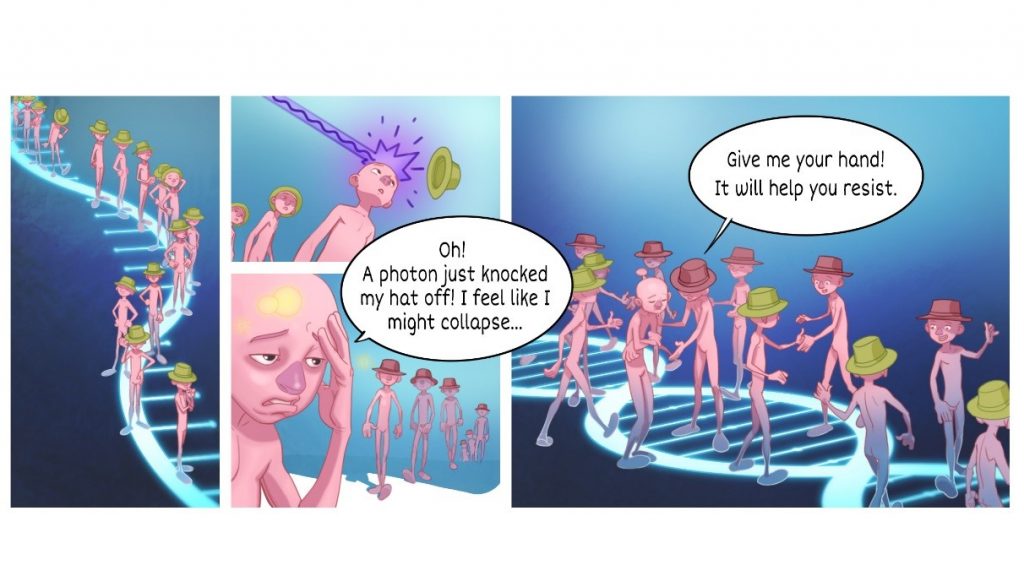DNA oxidation by absorption of low energy UV radiation

DNA bases are represented by cartoon characters and potentially ejected electrons by hats. A base loses its hat under the effect of UV radiation and is transformed to a radical. Radicals survive longer when bases are paired in double helices.
Oxidizing capacity of UV radiation: high and low energies. When DNA loses an electron it undergoes a series of transformations likely to modify the genetic code. Such a loss may be provoked by chemical reactions involving other molecules present in the cell or triggered by ionizing radiation. Absorption of UV radiation directly by DNA may also induce electron ejection provided that its energy is sufficiently high (wavelengths longer than 200 nm). The OPHID objective was to examine whether low energy UV radiation (wavelengths longer than 260 nm) is capable of producing the same effect and determine the probability of such events.
Quantify the electrons ejected from DNA and follow the evolution of the resulting radicals. Working with various DNA systems in aqueous solution, we have characterized the primary chemical species underlying oxidative damage, the ejected electrons and the resulting base radicals. As these species are not stable during the time, we have recorded their UV-visible absorption spectra on the nanosecond to millisecond times scales, after excitation with nanosecond UV laser pulses. We interpreted our results in the light of quantum chemistry calculations. In addition, we have searched oxidation markers using analytical chemistry methods.
Major results. Our study showed clearly that absorption of low energy UV photons directly by DNA may generate base radicals with a probability 10-3. Such a probability is comparable to that corresponding to formation of other well-known lesions induced by the same energy UV radiation. Base radicals disappear on the millisecond timescale and their lifetime is longer in double helices compared to single strands. Oxidation markers have been detected following both UVC and UVB irradiation of genomic DNA.
Scientific production. The results obtained in the frame of OPHID have given 17 articles published in international journals and presented in 12 international conferences (11 invited lectures). A special effort was made to communicate the outcomes of our research to photobiologists, in particular thought publications and conferences specific to this community.
Facts. DNAexciton was a project of fundamental research. It was coordinated by Dimitra Markovitsi (LIDYL, CNRS, CEA, Université Paris Saclay). Thierry Douki (LCIB, CEA Grenoble) and Roberto Improta IBB, CNR, Napoli) were partners. The project started on February 2012 and lasted 45 months. The ANR funding, received only by the French teams, was 322 k€, for a total cost of 1480 k€.


